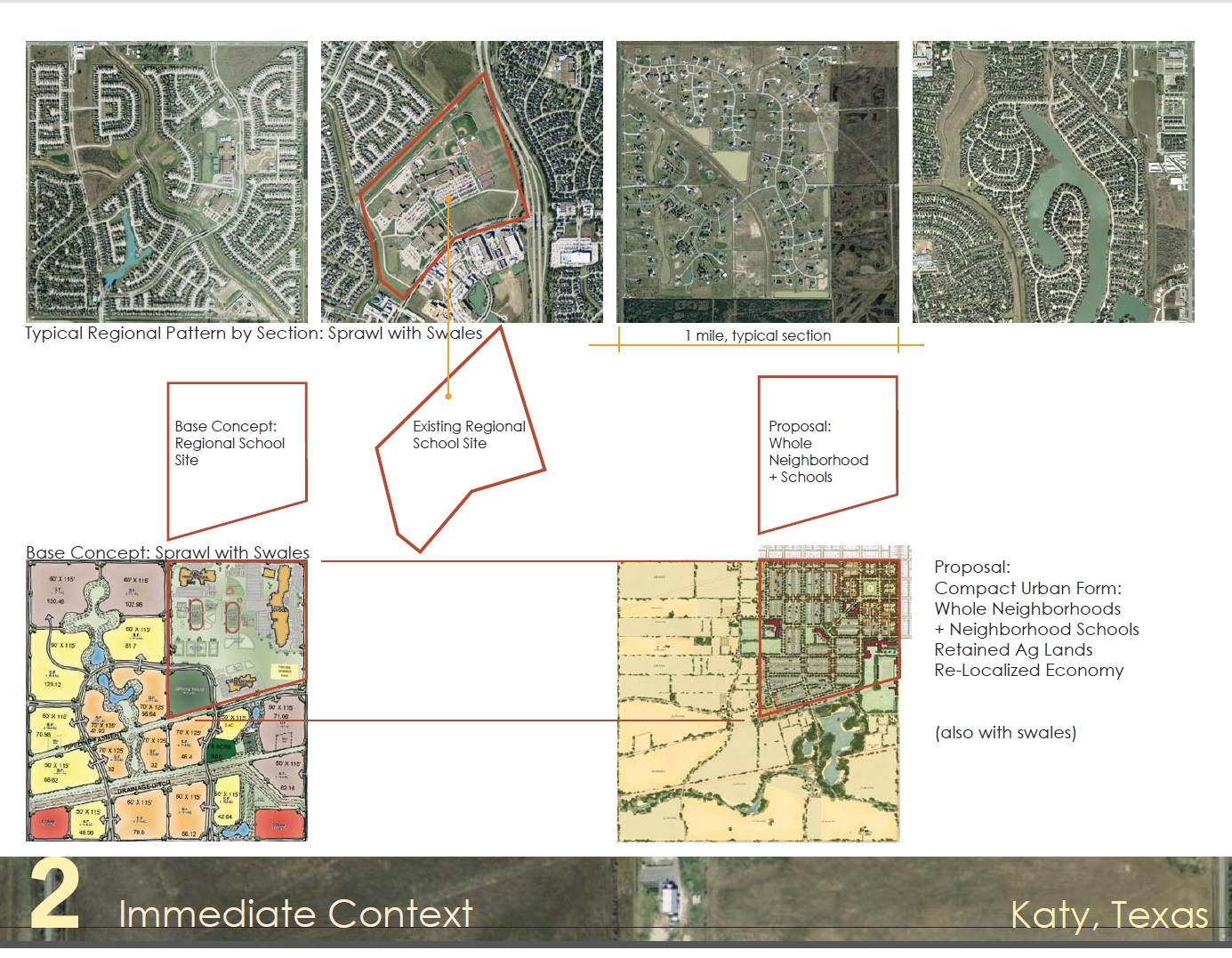
This avante-garde entry to the 2009 Low Impact Development contest hosted by the Houston Sustainable Land and Water Forum, named the Salon des Refuses Project preserved 480 acres of prime farmland and high quality Katy Prairie habitat with the same or greater lot yield as the mainstream entries. The proposed 160-acre development included a diverse array of housing types, including single family detached, as well as town homes and mixed use areas, in a complete neighborhood plan that reduces vehicle miles traveled and that is transit ready.
A city of 500,000 people at 4,000 people/sq mi will occupy 125 sq miles, while the same population at 15,000 people/ sq mi (the density of the French Quarter in New Orleans) will occupy only 33 square miles, a considerably smaller area needing protection. If each of these areas were arranged in a square, and needed protection all the way around, the first city would require 45 miles of levees, where as the second city would only require 23 miles of levee protection. At five to ten million dollars per mile for levee construction, a savings of close to $200,000,000 could be realized; or more importantly, much better levees, maintained to a higher degree, could be built to protect the smaller area occupied by the same amount of people. Most of the levees built in New Orleans were built to protect and to enable development at suburban densities, areas nowhere close to the French Quarter in terms of density (or livability). Research on the world-wide cost of levees per capita per linear mile compared with the sturdiness of the levees might be illuminating.



